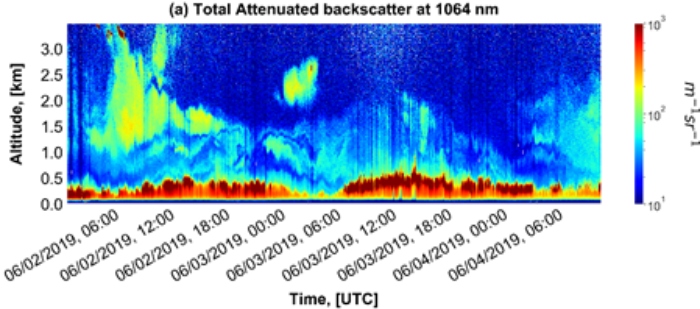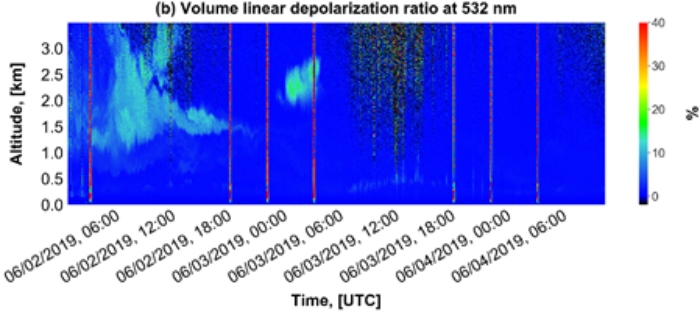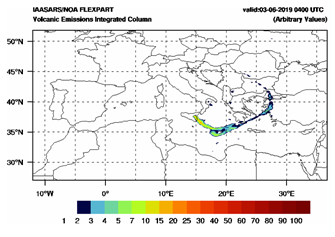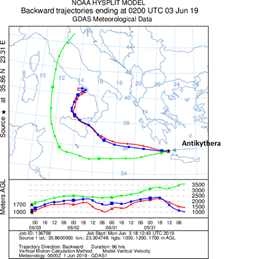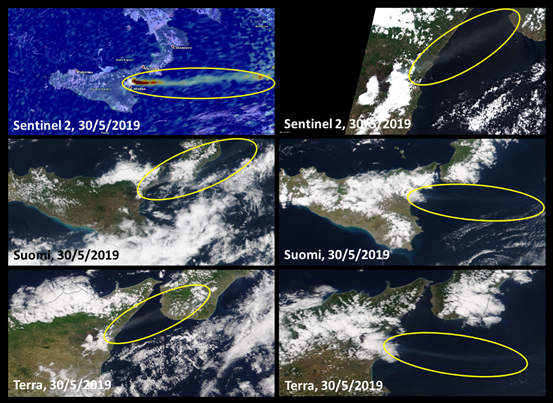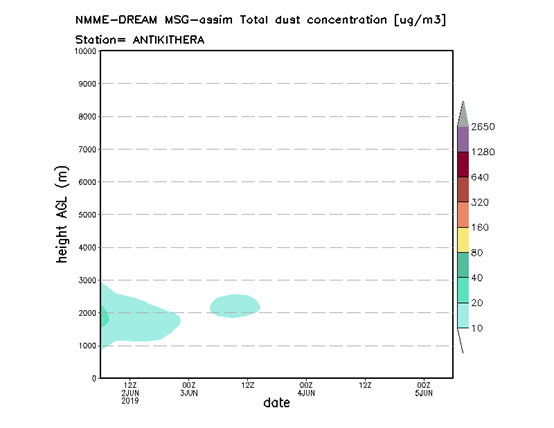Aerosol particles of possibly volcanic origin were monitored with the multi-wavelength lidar, Polly XT of the National Observatory of Athens (PANGEA-NOA), over Antikythera. The presence of these elevated layers above Greece could be a result of the continuous Etna activity for the past few days (volcanic activity initiated in the morning of May 30, 2019).
The co-existence of desert dust particles should not be excluded (see NMME-Dream plot of total dust concentration). An ensemble of satellite imaginary from 30 to 31 May, 2019 above the area of western Mediterranean, presents the evolution of the plume transport towards Greece during these two days (see Figures from Sentinel, Suomi and Terra satellites). The volcanic plume is highlighted in yellow.
The elevated plumes were first observed with the PANGEA lidar system, during the early hours on 2 June, 2019 at a height of 0.5 to 3 km above the PBL (see Total Attenuated Backscatter and Volume Depolarization Ratio figures). Lidar attenuated backscatter at 1064 nm from 2/6/2019 to 4/6/2019, where the volcanic plumes are plotted in bright yellow and blueish colors, from 0.5 up to 2.5 to 3 km. Also the volume depolarization (VLDR) quicklook at 532nm, reveals that the particles at these heights are highly irregular, with VLDR values larger than 10%. Up to now, the highest optical depth (0.1) was recorded on June 2, 2019 from 00:30 to 02:30 UTC.
In combination with FLEXPART model runs and HYSPLIT model back-trajectories, the plumes are confirmed to originate from Etna. The daily diffusion of volcanic plumes is presented in FLEXPART figure. The first plumes are transported towards Greece and reach Peloponnese on 31 May, 2019, while on 2 June, 2019 the aerosol path shifts towards the southern parts of Greece and reaches Antikythera. The arrival height above Antikythera is ~1 km on 2 June, 2019, 2 UTC.
